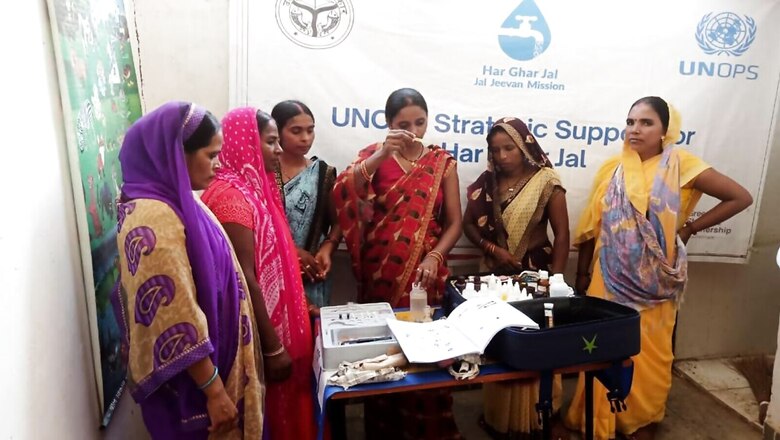
views
Water is necessary for life and for numerous derived essential applications, ranging from industry, agriculture, drinking, sanitation and hygiene. Recognizing the importance of accessing water, the United Nation’s Sustainable Development Goals (SDGs) emphasizes on “clean water and sanitation” (targets 6.1 and 6.2) and ensuring sustainable and equitable access to water for all.
It is also a known fact that a family’s lack of access to water disproportionately affects the woman. Women in India devote an average 150 million workdays every year fetching water, which could have been used otherwise on education, skill development and/or for her own physical and mental well-being.
Several studies conducted over more than two decades worldwide have concluded that there is substantial improvement in leadership, transparency and sustainability of water supplies when men and women are equally involved, compared to cases wherein women are marginally or not involved at all. As a matter of fact, an assessment conducted by the World Bank presented that simply involving women can increase the effectiveness of water projects by six to seven times over those that do not.
On 15 August 2019, only 3.23 crore rural households out of a total 19.18 crore had piped water connections. Under Jal Jeevan Mission, about 43 per cent rural households have been provided with tap water connections to date and 100 per cent homes in six states and Union Territories are availing tap water supply, as per official data.
However, the broader objective is not just increasing the ‘number’ of functional tap water connections. The focus of Jal Jeevan Mission is to initiate a women-driven revolution to decentralize the system and empower the community, especially women, to address their water concerns on their own. Today, rural women are breaking the glass ceiling by stepping into traditionally male-dominated roles like plumbers, masons, electricians etc. as well as testing water quality and updating results on the portal themselves.
The Jal Jeevan Mission emphasizes on ‘water quality’ in its definition for functionality and water testing. It prioritizes monitoring the operation of water supply, verification of the safety of drinking water, investigation of disease outbreaks, validation process and preventive measures. As per the operational guidelines, the surveillance of water quality at the grassroots will be responsibility of the GPs/rural community.
The United Nations Office of Project Services (UNOPS) is a sector partner to the Ministry of Jal Shakti to support Jal Jeevan Mission and is currently working in 11 districts of Bundelkhand, Vindhya and Prayagraj regions of Uttar Pradesh. Despite availability of ample sources of water in rural areas of Uttar Pradesh, quality of water has always been an issue.
The possible sources of contamination include naturally occurring chemicals and minerals (for example, arsenic, fluoride, iron, uranium etc.) in the earth layer; local land use practices (for example, fertilizers, pesticides, livestock, concentrated feeding operations etc.); manufacturing processes (for example, heavy metals, cyanide) near the drinking water sources; malfunctioning on-site wastewater treatment systems (for example, septic systems and twin-pit toilets) and microbial contamination through mixture of wastewater in the drinking water source or distribution line.
To address the issues pertaining to water quality, under Information, Education and Communication activities, a new innovative tool “Community Led Action for Sanitary Surveillance” (CLASS) was developed and introduced by UNOPS, not only to motivate the community to be actively involved in the programme but also develop a participatory model of community based water quality monitoring system at the grassroot level.

Photo by special arrangement
The process of CLASS begins with an initial introduction and rapport building with community members. Then UNOPS facilitates the discussion on mapping of water-borne diseases, expenditure on water and sanitation-related illnesses and how it can be minimized. This is followed by selection and training of five women from the community who analyze all drinking water sources in the village for chemical and bacteriological contamination using Field Test Kits (FTKs) as well as conduct a sanitary survey. The details of the women trained are captured on JJM-IMIS portal. The results are shared with the larger community as well as remedial action based on the findings of water quality monitoring exercise are demonstrated. Safe and unsafe water sources are identified and finalized by the community.
The outcomes lead to collective realization of risks associated with different sources and related water usage, handling and management practices and could trigger collective action at the community level. In case of bacteriological contamination, which is a common phenomenon in Uttar Pradesh, the realization could include that people in the village are drinking fecal parts mixed in water. As the tests are demonstrated in public view, it creates a sense of disgust and triggers immediate collective action for remedial measures, such as boiling water before use and addition of chlorine and bleaching powder to ensure safe use by all in the village. If chemical contamination is observed in the drinking water sources, the samples are sent for further lab testing to district administration and followed up at the block level and Jal Nigam for remedial action. In all cases, the problems are escalated to the Pradhan and finally to the district administration which takes the final call.
These identified women will gradually undertake complete responsibility of taking the mission forward. These community facilitators may include members from different kinds of community based organizations, such as SHGs, Village and Water Sanitation Committees, ASHA, along with community level workers such as ANMs, teachers etc. The members of Gram Panchayat could also be identified and encouraged to be CLASS facilitators. Besides, any willing person from the village emerging as a natural leader could be groomed as a community facilitator.
The ideal outcome of the exercise is that external facilitators do not press the community either for initiating collective action or action planning. This should come about as a considered and wilful action by the community, to take their own decisions to protect their drinking water sources. This can be replicable in any village for any drinking water source.
Empowering women to lead water quality surveillance by integrating technology, the Ministry of Jal Shakti has developed a dedicated dashboard, the Jal Jeevan Mission Water Quality Management Information System (JJM WQMIS), in partnership with the Indian Council of Medical Research (ICMR), and also launched a mobile application for water quality management on Gandhi Jayanti this year. All water quality data is available in public domain, i.e. number of labs, nearest lab, water sample and testing details, etc. The app also alerts the local authorities for remedial action, wherever required. This ease of access to readily available data will go a long way in ensuring requisite policy implementation for assured service delivery.
Water woes have always been linked to women. Jal Jeevan Mission links the solution to women too. It enables and empowers women to address their concerns themselves. Today, they are not just planning the scheme of water pipeline design in their village, but also monitoring water quality, managing grey water through kitchen gardening, being trained as plumbers and technicians as well as building their knowledge and skillset and also improving their health and hygiene.
The writer is National Communication Consultant at United Nations Office for Project Services. The views expressed in this article are those of the author and do not represent the stand of this publication.
Read all the Latest News , Breaking News and IPL 2022 Live Updates here.












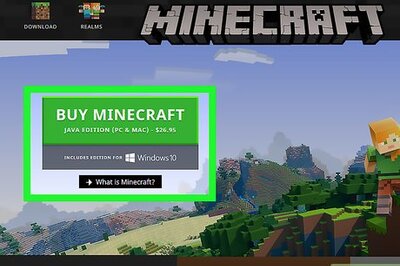


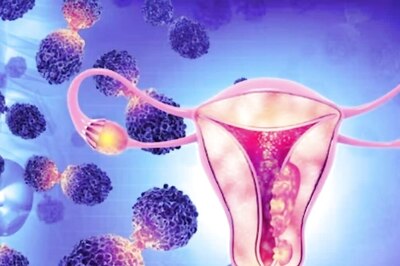

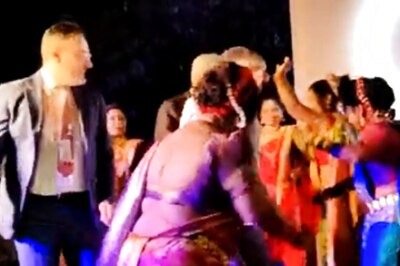

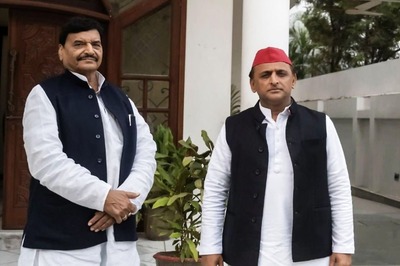
Comments
0 comment